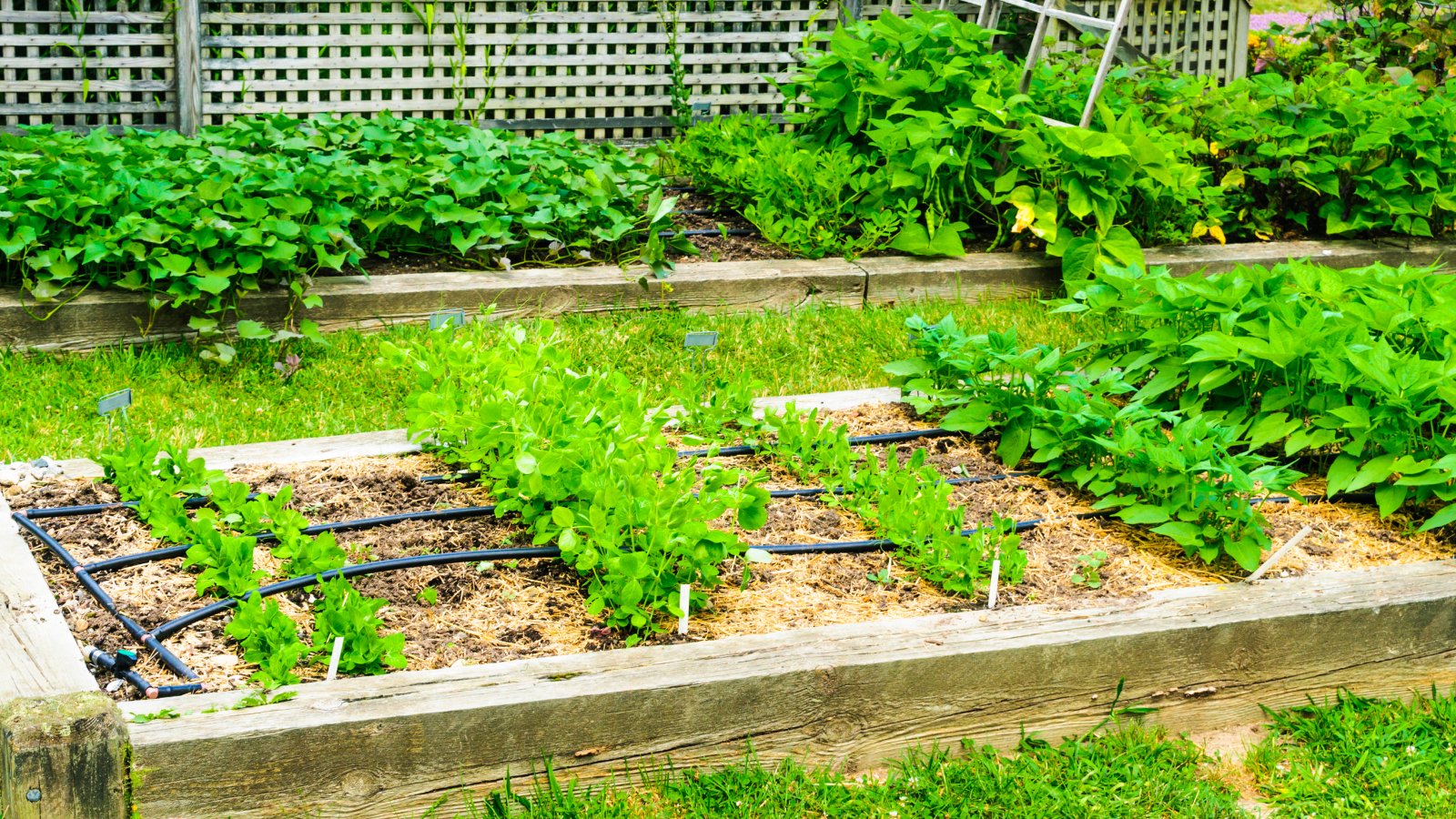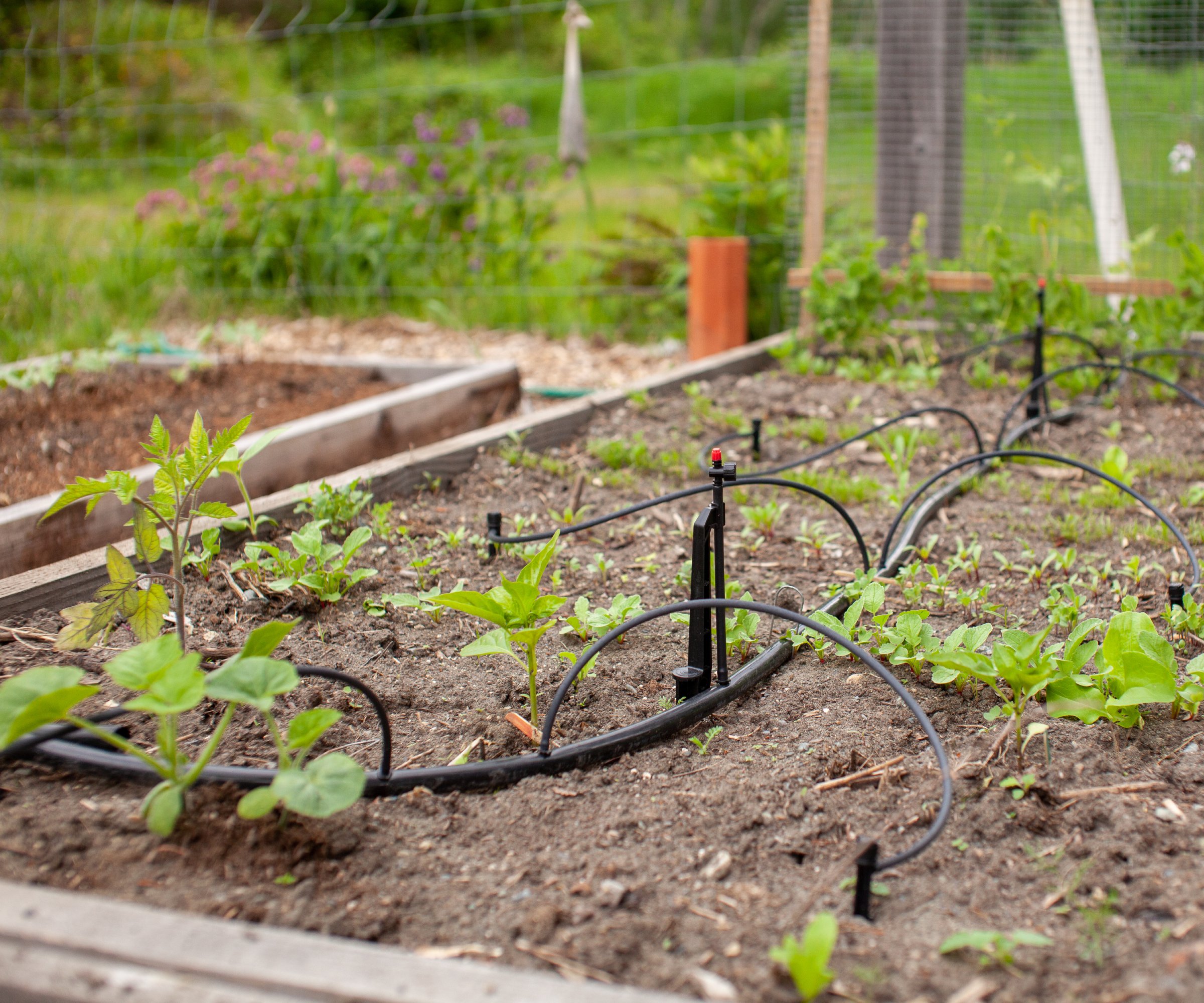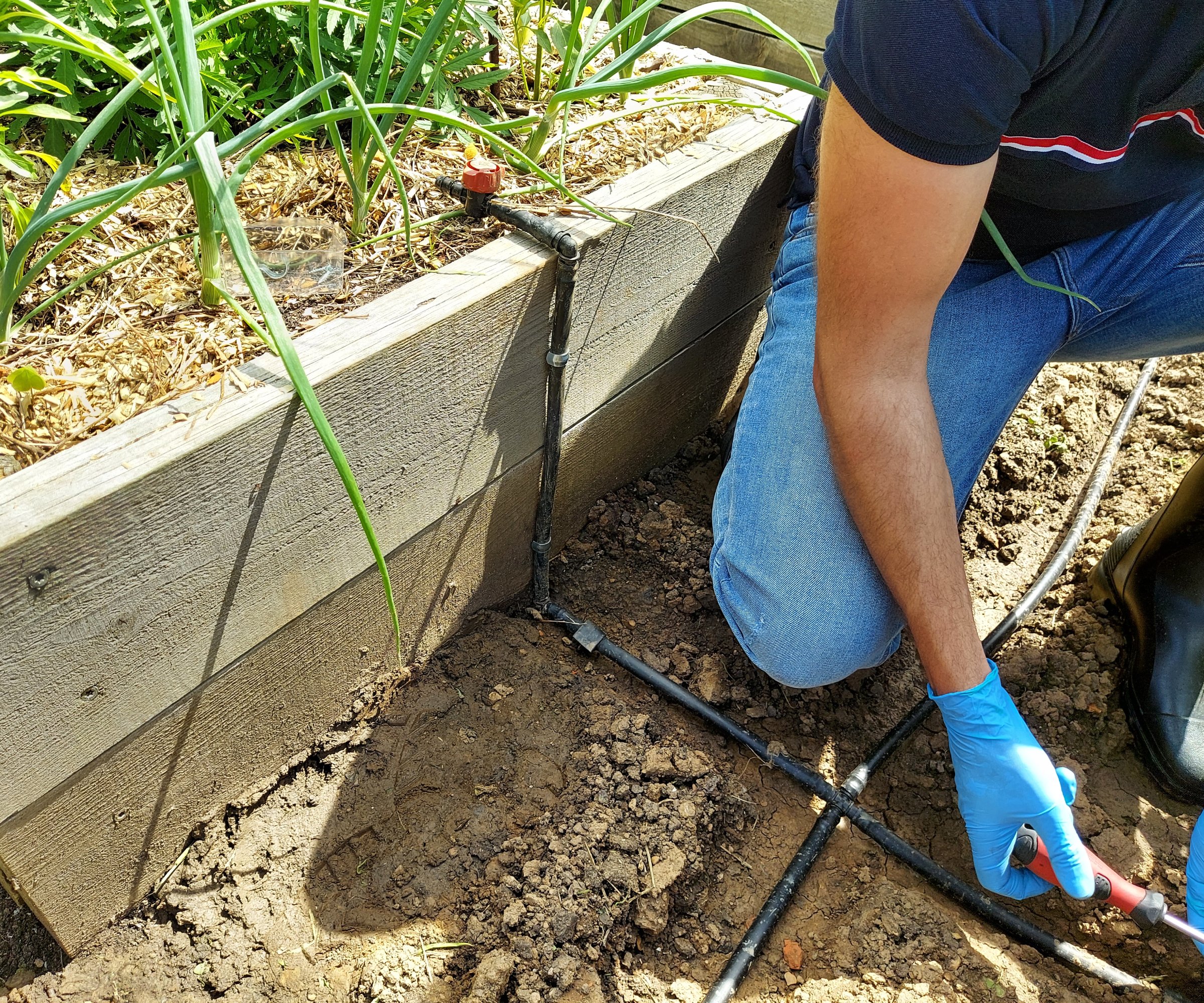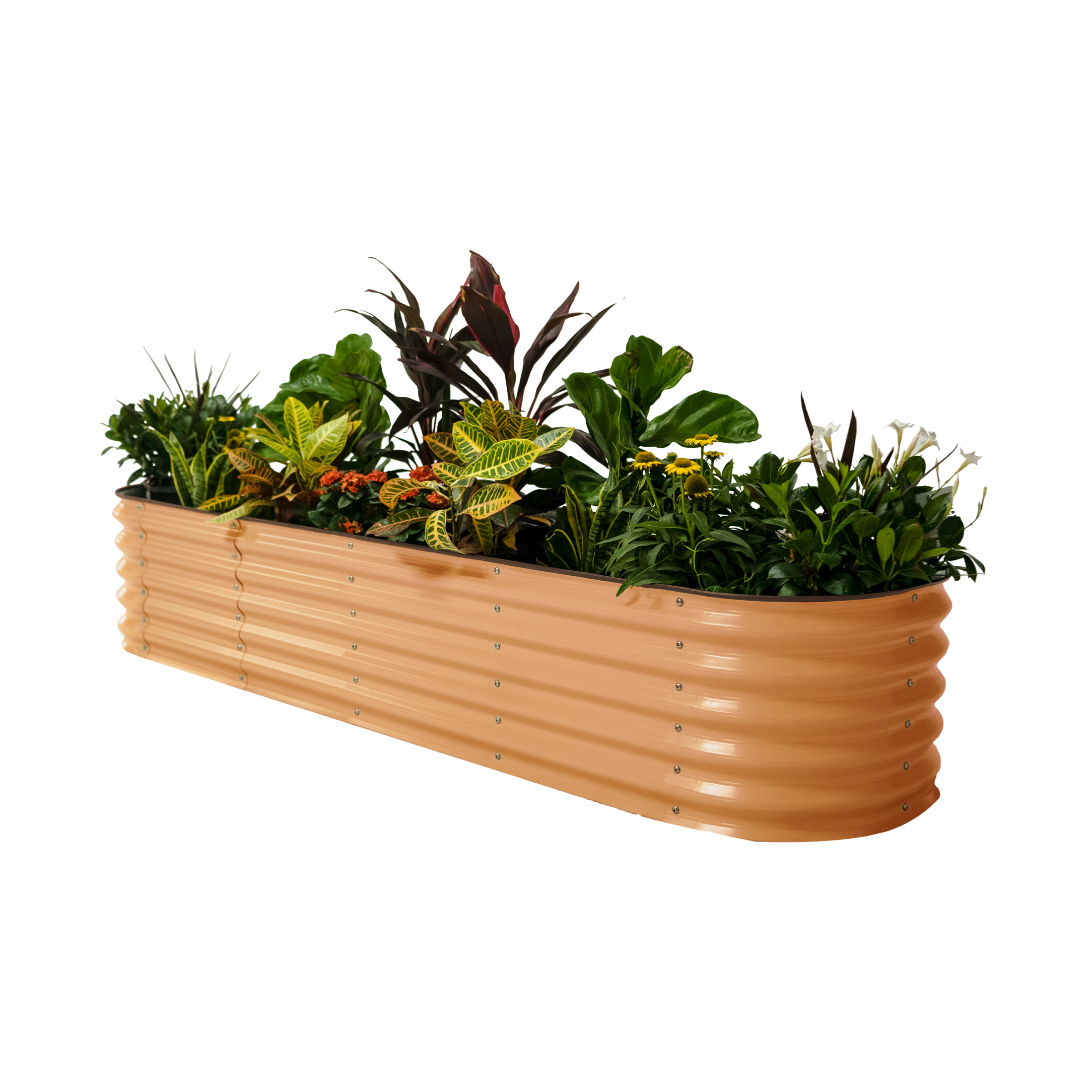Use Drip Irrigation For Raised Beds To Grow More With Less
Install a drip irrigation system directly into your raised bed to keep plants lush while saving on water.


A drip irrigation system is a great way to water raised beds. A drip system for raised beds gets water to the plant’s roots while keeping it off the leaves. An added bonus is you can grow more plants with less water.
Benefits of Drip Irrigation for Raised Beds
Drip irrigation involves a slow application of water to a plant's root area through individual water release mechanisms called emitters. This allows for a very focused application of water. No water is splashed on the foliage and, since the water is delivered under the soil, little is lost to evaporation. And watering so deeply encourages the roots to grow down. In addition, weeds growing between plants are deprived of water and die.
Choosing a Drip Irrigation System for Raised Beds

All drip irrigation systems have five different components:
- A water filter
- A pressure reducer
- A pressure gauge
- A header pipe
- Drip lines
The two primary types are a rigid drip system and a flexible T-tape system. The former is more expensive but lasts longer, while flexible drip tape, also called T-tape, is cheaper, but it’s only good for a season or two.
If you are just getting started with drip irrigation, consider buying a complete system from a supply company. They will sell you one based on how many containers you want to irrigate. As an alternative, retrofit your current raised beds with drip irrigation, using elbows and pipe and putting the drip lines at ground level.
Keep your maximum water pressure in mind. An irrigation drip system can not deliver more water than the supply and pressure permit. Also, be sure to design the system with your plants in mind.
How to Install Drip Irrigation in Raised Beds

Raised beds can also be retrofitted to use drip irrigation. It is just a matter of using elbows and various lengths of pipe to allow the drip lines to be at ground level between the beds.
Sign up for the Gardening Know How newsletter today and receive a free copy of our e-book "How to Grow Delicious Tomatoes".
Winterizing a Raised Bed Drip Irrigation System
If your winters get cold, you’ll need to winterize your irrigation system. If the temperatures are very cold, the water in the components of the system will freeze. Water expands and can split the tubes.
Drain the water out of the system through the mainline ends and the ends of the T-Tape. Then replace the line ends to keep dirt from getting in. Store the filter indoors. Flush the system when you start up again in the spring.

Teo Spengler is a master gardener and a docent at the San Francisco Botanical Garden, where she hosts public tours. She has studied horticulture and written about nature, trees, plants, and gardening for more than two decades, following a career as an attorney and legal writer. Her extended family includes some 30 houseplants and hundreds of outdoor plants, including 250 trees, which are her main passion. Spengler currently splits her life between San Francisco and the French Basque Country, though she was raised in Alaska, giving her experience of gardening in a range of climates.
